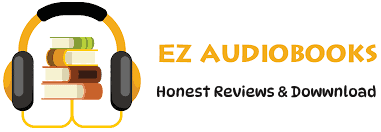Audiobook Sample
Listen to the sample to experience the story.
Please wait while we verify your browser...
- Title: Hiroshima
- Author: John Hersey
- Narrator: George Guidall
- Length: 05:24:55
- Version: Abridged
- Release Date: 25/02/2011
- Publisher: Recorded Books
- Genre: History, World
- ISBN13: 9.78E+12
The first time I heard George Guidall’s voice crack while narrating Hiroshima, I had to pull my rental car over on a winding mountain road in Nagano. The late afternoon sun filtered through cedar trees as Mrs. Nakamura’s story of searching for her children in the radioactive rubble unfolded through my speakers. In that suspended moment, John Hersey’s journalistic masterpiece ceased to be history and became immediate, visceral experience – exactly as the best audiobooks should make us feel.
Hersey’s groundbreaking work, originally published in 1946, achieves something remarkable in this audio format. By focusing on six ordinary civilians – a clerk, a doctor, a widow, a pastor, a surgeon, and a young factory worker – the narrative reconstructs August 6, 1945 with devastating intimacy. As someone who’s spent years collecting oral histories in markets from Marrakech to Oaxaca, I can attest that the power of individual testimony, when preserved this carefully, transcends time and culture.
Guidall’s narration is a masterclass in restrained emotion. His voice carries the weight of these stories without melodrama, letting Hersey’s precise language do its work. When describing Dr. Fujii being thrown into the river by the blast, Guidall’s pacing mirrors the disorientation – quick bursts of action followed by eerie stillness. He handles Japanese names and locations with respectful accuracy, something I particularly appreciate after my own linguistic stumbles while traveling through Tohoku.
The audiobook’s structure unfolds like the peeling of an onion (a metaphor that takes on grim irony given the victims’ radiation burns). We move from the morning’s normalcy – breakfast preparations, commute routines – to the blinding flash, then through concentric circles of aftermath. Hersey’s clinical description of thermal burns (‘the sloughing of skin like wet tissue paper’) becomes almost unbearable in audio form, precisely because Guidall doesn’t overdramatize it. The horror lives in the spaces between his words.
What makes this production exceptional is how it preserves Hersey’s original journalistic approach while gaining new dimensions through audio. The 1985 addendum, where Hersey revisits his subjects forty years later, hits particularly hard in Guidall’s delivery. Hearing how Miss Sasaki’s limp persisted into her sixties, or how Reverend Tanimoto wrestled with survivor’s guilt, transforms statistics into human continuity. It reminds me of sitting with tsunami survivors in Ishinomaki a decade after 3/11 – how trauma etches itself into bodies and landscapes.
For history enthusiasts, the audiobook offers fascinating layers. Hersey’s detached tone, modeled after Thornton Wilder’s ‘The Bridge of San Luis Rey,’ creates an unsettling contrast with the content. Guidall subtly highlights this by adopting a slightly more conversational tone for the 1985 chapter, emphasizing how time changes narrative perspective. The production wisely avoids sound effects or music, letting the words stand alone as they did in The New Yorker’s original publication.
Compared to other WWII oral histories like Studs Terkel’s ‘The Good War’ or Svetlana Alexievich’s works, Hersey’s approach feels both more immediate and more timeless. While some might find the clinical descriptions of radiation sickness difficult to hear (I had to pause during Dr. Sasaki’s hospital scenes), this unflinching honesty is precisely what makes Hiroshima essential listening. In an era where nuclear threats have reemerged in global discourse, these testimonies feel terrifyingly relevant.
The audiobook’s only limitation is its brevity – at just under 5.5 hours, some might wish for more contextual analysis. But this restraint is ultimately a strength. Like the atomic shadows permanently etched onto Hiroshima’s streets, the stories linger precisely because they aren’t over-explained. I found myself sitting in silence for nearly an hour after finishing, just as I did after visiting the Peace Memorial Museum.
For fellow travelers and story collectors, this audiobook offers profound lessons in listening. The way Mrs. Nakamura describes the bomb’s sound (‘not like thunder but like distant fabric tearing’) or Dr. Fujii recalls the taste of river water mixed with blood – these sensory details stay with you. They’ve changed how I document my own journeys, reminding me that history isn’t found in monuments but in the wrinkles around survivors’ eyes as they speak.
If you’re new to audio nonfiction, this is an ideal starting point. Guidall’s narration makes complex medical and political details accessible, while Hersey’s structure provides natural pause points. Listen during a long drive or quiet evening – but be prepared to have your perspective on war, memory, and resilience permanently altered.
With ears always open to the world’s stories,
Marcus Rivera

